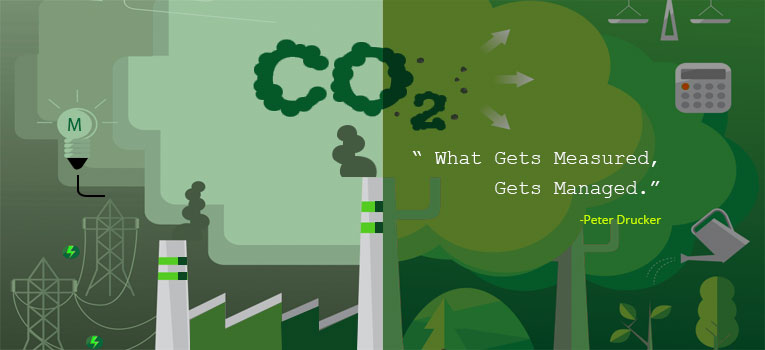The assessment of carbon dioxide emissions is known as the carbon footprint analysis. It involves evaluating CO2 emissions that are mainly concerned with product manufacturing, service, or activity leading to global warming to determine its impact and possible strategies to reduce the emission and thereby the carbon footprint.
“What gets measured, gets managed” holds entirely true for carbon emissions as well. This view made William E. Rees and Mathis Wackernagel develop the carbon footprint concept around the 1990s. It is an arm of the ‘ecological footprint.’
The process begins by analyzing the release of carbon-containing gaseous products and other greenhouse gases like sulfur hexafluoride. The obtained emission values are converted in terms of carbon dioxide equivalents (CO2e). The principles of carbon footprint analysis have three core standards that are, GHG Protocol (Product, Life Cycle Accounting, and Reporting Standard), ISO/TS 14067, and PAS 2050.
The regulation of the emissions of carbon dioxide and other GHGs in the United States is according to the Clean Air Act (CAA), which comes under the United States Environmental Protection Agency. The agency issues a set of standards to keep the industry’s carbon emissions at an ecologically sustainable level. Some of these rules are as follows:
- National Ambient Air Quality Standards (NAAQS): It addresses six pollutants threatening public health i.e. sulfur dioxide, nitrogen dioxide, particulate matter, carbon monoxide, ozone, and lead.
- New Source Performance Standards (NSPS): They regulate the level of attainable emissions by using efficient reduction methods. It also considers the cost for the concerned businesses.
- National Emissions Standards for Hazardous Air Pollutants (NESHAP): It keeps a check on the level of air pollutants that can deteriorate public health. It majorly covers all the air pollutants as in NAAQS.
On the same lines, two other regulatory sets of guidelines, the Kyoto Protocol (1997) and The Montreal Protocol (1989) are recognized by the industries.
Determining Carbon Footprint
The carbon footprint of all the entities contributing to it is measured effectively by various calculators manufactured by different companies. It offers the client companies many options, depending on the mode of data presently being collected. Once the carbon footprint volume is estimated, technologies, strategies, and solutions to reduce its extent are applied.
Broadly, the determination of carbon footprint is a series of five steps. These are:
Step 1: Understanding the motive behind getting the carbon estimation done
Step 2: Clearly define the industry’s emissions under three main pre-decided scopes. That is,
- Scope 1 emissions: emissions directly from the point of product production or delivering a service. On an individual scale, it is the emissions from the personal vehicle. On an industrial scale, greenhouse gases are emitted by the burning of fossil fuels by the concerned industry.
- Scope 2 emissions: emissions that occur upstream or downstream of the primary process. These are GHG emissions from the consumption of other sources of energy like electricity, steam, or heat.
- Scope 3 emissions: these indirect emissions are due to sources not directly owned by the company but are involved in its services. For example, disposal of the product, emissions during distribution, etc.
Step 3: This includes devising strategies to reduce carbon emissions. Some of the ways to do this involve developments in existing technologies, employing energy-efficient processes, updated GPP (Green Public or Private Procurement), effective consumption strategies, etc.
Step 4: Attain verification and assurance for the industry’s carbon footprint. This assurance enables the industry to be sure that the calculations are correct. Several such certifications are Greenhouse Gas Protocol, CEMARS, and carboNZero.
Step 5: The last step is publishing the results obtained. It is essential to make the reports public for the industry stakeholders: customers, employees, business partners, etc. This published report is also known as the sustainability report of a company.
The reduction in carbon emission is made by replacing the existing technologies with newer, energy-efficient processes. These include management of refrigerants, improved energy emission, proper treatment of effluents, using renewable sources of energy, and getting the product’s life cycle or value chain footprint analysis done at regular intervals.
Conclusion
With increasing concern about global climate change, industries have also started to estimate their contribution to it. This result is achieved by carbon footprint analysis. A company needs this figure to keep its carbon emissions under control and reduce the cost and risk involved. Along with this, a majority of businesses prefer partnering with companies with “green” credentials. In this way, carbon footprint analysis also improves the company’s reputation in the market. Earning a certification and publishing the emission report greatly enhances the brand’s image.



